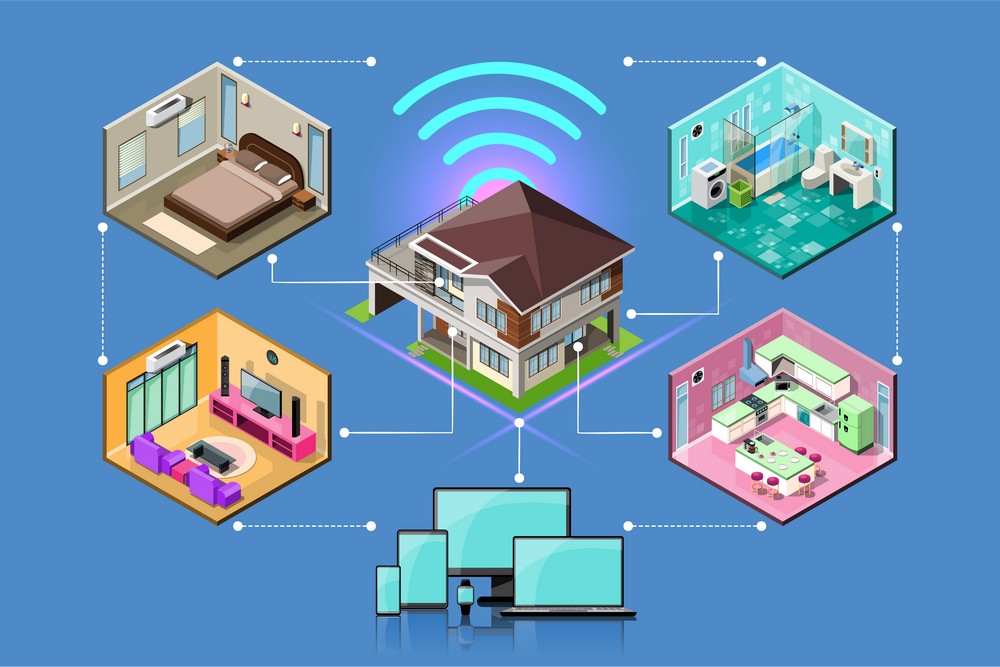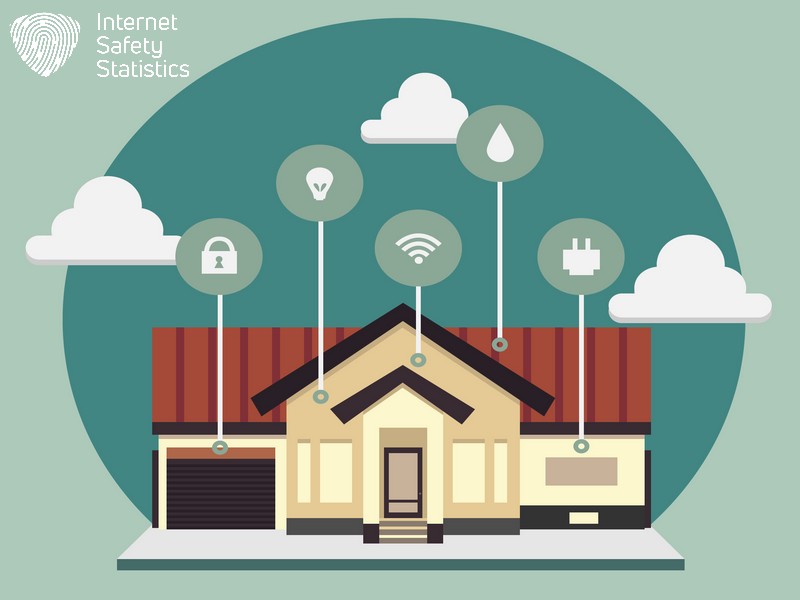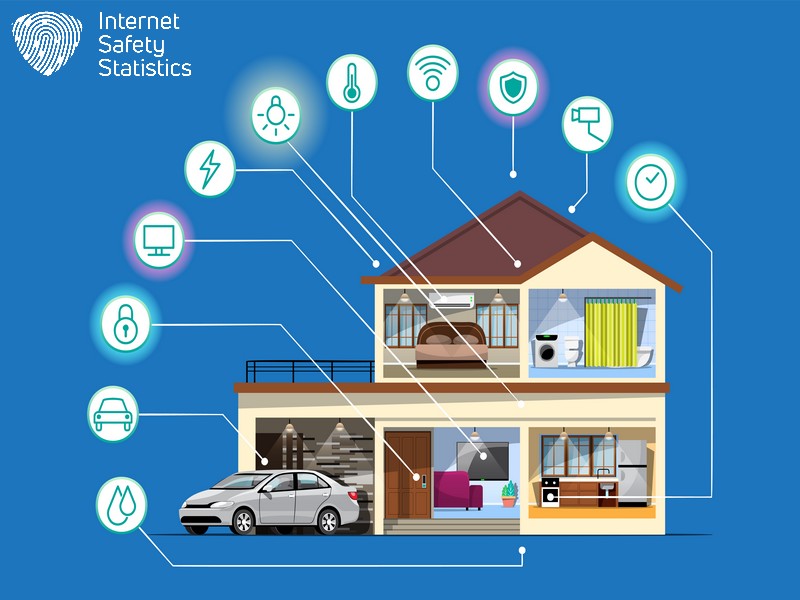
The digital age revolves around connectivity, and our home Wi-Fi networks serve as the gateways to the online world. However, just like securing our physical homes, safeguarding these networks is paramount in today’s ever-evolving threat landscape. Unsecured Wi-Fi routers act as open invitations for unauthorized access, potentially exposing our connected devices and sensitive data to cyberattacks.
This practical guide empowers you to transform your home network into a secure digital haven. We’ll explore a comprehensive approach to fortifying your Wi-Fi, addressing essential security measures. From selecting strong passwords and enabling encryption to implementing guest network options and keeping your router firmware updated, we’ll provide clear, step-by-step instructions.
By following these practices, you can create a robust shield against unauthorized access and potential security breaches. This ensures a safe and secure online environment for you, your family, and all your connected devices, fostering peace of mind as you navigate the vast digital landscape.
Our article provides a step-by-step guide on how to fortify your home network against these invisible intruders. Dive in to turn your internet connection into an impenetrable fortress.
Understanding Home Network Hardware
When setting up a secure home network, it’s important to understand the hardware components involved, such as routers and modems. Evaluating whether to use wired or wireless devices is crucial in ensuring a strong and secure network connection.
Evaluating Hardware Components
Choosing the right hardware is the first step in creating a secure home network. It’s essential to evaluate components for both performance and security features.
- Identify your needs: Start by assessing what you will use the network for, whether it’s streaming, gaming, work or smart home devices.
- Research router models: Look for routers with strong built-in security features like firewalls and automatic firmware updates.
- Consider modem type: If you have a separate modem, ensure it’s compatible with your internet service provider and has the capacity for your speed requirements.
- Check compatibility: Ensure all network devices are compatible to avoid connectivity issues.
- Opt for quality cables: Choose high-quality Ethernet cables for wired connections to ensure faster speeds and better security.
- Analyse WiFi standards: Routers that support the latest WiFi standards (WiFi 6) offer improved performance and security options.
- Assess additional features: Look into routers with Quality of Service (QoS) settings to prioritise bandwidth for essential tasks.
- Review parental controls: For families, consider routers with robust parental control options to manage internet access.
- Seek out encryption capabilities: Ensure your router supports WPA3 encryption for a more secure wireless connection.
- Examine port numbers: More ports on a router provide flexibility to connect more wired devices if required.
Wired vs Wireless Devices
When considering the security of your home network, it’s crucial to evaluate the use of wired and wireless devices. Wired devices connected via Ethernet cables are more secure than wireless devices.
While wireless devices provide convenience, they can also pose a higher security risk due to potential unauthorised access. Understanding the differences between these two options allows for better network security management.
Segregating tasks based on device capabilities can enhance overall home network security. For example, sensitive data or work-related activities could be allocated to wired connections for added protection. At the same time, wireless connectivity can be reserved for less critical tasks such as internet browsing or streaming.
Creating a Secure Home Network
Connecting wired and wireless client devices is essential for a seamless home network. Extending the network range and optimising performance will ensure all your devices work smoothly.
Connecting Wired and Wireless Client Devices
When setting up a secure home network, switching between wired and wireless client devices depends on your security and internet connection needs. To connect wired and wireless client devices to your home network, follow these steps:
- Ensure all wired devices are connected to the router using Ethernet cables.
- Access the router’s settings and enable the Wi-Fi function for wireless devices.
- Create a strong and unique Wi-Fi password to prevent unauthorised access.
- Connect wireless devices to the network using the provided password.
- Consider implementing MAC address filtering for an added layer of security.
- Regularly update firmware for both wired and wireless devices to patch security vulnerabilities.
Extending Network Range
After connecting your wired and wireless client devices, extending your network range can further improve the coverage and connectivity of your home network. Here are some practical ways to extend your network range:
- Use a Wi-Fi extender or repeater to amplify the signal and expand coverage to areas with weak signal strength, such as basements or upper floors.
- Consider upgrading to a mesh Wi-Fi system, which uses multiple access points to create a seamless, unified network throughout your home.
- Position your router in a central location within your home to maximise its coverage area and reduce dead spots.
- Avoid physical obstructions such as thick walls, appliances, or metal structures that can block or weaken the Wi-Fi signal.
- Opt for high-gain antennas for your router to enhance signal strength and reach larger distances within your home.
- Implement network segmentation by creating separate networks for specific devices or areas in your home to optimise performance and security.
- Regularly monitor and manage bandwidth usage to ensure an even distribution of resources across all connected devices.
- Stay informed about the latest advancements in networking technology, such as Wi-Fi 6, which offers improved speed and efficiency for modern homes.
- Consider professional assistance if you require advanced solutions for extending your network range while maintaining robust security measures.
Optimising Network Performance
Optimising its performance for smooth operations is essential once your home network is extended to cover a larger area. Here are some tips for maximising your network’s efficiency and speed:
- Update Firmware: Regularly update your router’s firmware to ensure it has the latest security patches and performance improvements. This can be done through the router’s admin interface or the manufacturer’s website.
- Use Quality Components: Invest in quality hardware such as Ethernet cables, switches, and wireless access points to ensure optimal network performance. High-quality components can minimise signal interference and maximise data transfer speeds.
- Network Segmentation: Divide your network into segments to prioritise bandwidth for specific devices or services, such as streaming or gaming. This can help prevent one device from hogging all the bandwidth.
- Optimise Router Placement: Position your router centrally in your home and away from obstructions to ensure even coverage throughout the house. Avoid placing it near large metal objects or electronic devices that could interfere with its signal.
- Implement Quality of Service (QoS): Many modern routers support QoS settings, allowing you to prioritise certain types of traffic over others. This can help ensure that video calls and online gaming receive priority bandwidth.
- Analyse Network Traffic: Use network monitoring tools to identify which devices consume the most bandwidth and troubleshoot potential bottlenecks.
- Opt for Wired Connections: For devices that require high-speed connections, consider using wired Ethernet connections instead of relying solely on Wi-Fi, as this can provide more stable and consistent performance.
Protecting Your Home Network

Securing your router is the first step in protecting your home network. You should also ensure that your wireless network is properly secured and that all client devices are protected from cyber threats.
Securing the Router
To ensure the security of your home network, it’s crucial to focus on securing the router. Here are steps you can take to secure your router and protect your home network:
- Change the default login credentials for your router to prevent unauthorised access.
- Update the router firmware regularly to patch potential vulnerabilities and improve security features.
- Enable encryption such as WPA3 or WPA2 on your wireless network to protect data transmission from unauthorised access.
- Disable remote router management to prevent external control and potential security risks.
- Implement a strong router password with a combination of letters, numbers, and special characters for enhanced security.
Wireless Network Security
Now, let’s delve into wireless network security, which is critical for safeguarding your home network. Here are some key steps to ensure the security of your wireless network:
- Enable WPA2 or WPA3 encryption on your WiFi router to protect data transmitted over the network from unauthorised access.
- Change the default SSID (Service Set Identifier) and set a strong, unique password for your wireless network to prevent unauthorised access.
- Utilise MAC address filtering to specify which devices can connect to your wireless network, adding an extra layer of security.
- Regularly update the firmware on your WiFi router to patch any known vulnerabilities and improve its overall security posture.
- Consider implementing a virtual private network (VPN) to encrypt internet traffic and provide an extra layer of security when accessing sensitive information online.
- Disable remote administration on your wireless router to minimise the risk of unauthorised access to its settings from outside your home network.
- Position your WiFi router centrally within your house and away from windows to mitigate the risk of signal eavesdropping from outside.
- Regularly check the connected devices list in your router’s administration panel to identify any unfamiliar devices connected to your network and take necessary action if required.
- Consider investing in hardware firewalls that provide an additional barrier against potential cyber threats targeting your home wireless network.
Securing Client Sevices
To secure client devices on your home network, follow these essential steps:
- Install and regularly update antivirus and anti-malware software on all connected devices to protect against malicious threats.
- Enable firewalls on each device to block unauthorised access to the network and prevent potential security breaches.
- Implement strong, unique passwords for each device and consider using multi-factor authentication to add an extra layer of protection.
- Keep all operating systems and software up to date with the latest security patches and firmware upgrades to mitigate vulnerabilities.
- Educate all users about safe browsing habits, such as avoiding suspicious links or downloads, to minimise the risk of malware infections.
- Utilise virtual private networks (VPNs) when accessing sensitive data over public Wi-Fi networks to encrypt data and safeguard privacy.
- Consider implementing device-specific controls such as parental controls for children’s devices to manage access and restrict inappropriate content.
- Regularly monitor all devices for any unusual activity or unauthorised access that could indicate a security breach.
Best Practises for Home Network Security

Minimising risk and vulnerability points, restricting access to the network, and using secure protocols are essential for enhancing home network security. Read on for practical tips to protect your home network from cyber threats.
Minimising Risk and Vulnerability Points
To minimise risk and vulnerability points in your home network, you can take the following measures:
- Regularly update all firmware for routers and connected devices to ensure they have the latest security patches.
- Enable firewalls on all devices to monitor incoming and outgoing traffic, preventing unauthorised access.
- Use strong, unique passwords for your router, Wi-Fi network, and connected devices to deter potential attackers.
- Implement data encryption protocols such as WPA3 for your Wi-Fi network to protect data transmission from eavesdropping.
- Utilise network segmentation to create separate guest networks or VLANs for IoT devices, minimising the impact of any potential breach.
- Be cautious about email links and downloads, as they can be sources of malware that could infiltrate your network.
- Regularly review the access permissions for each device and user on your network to ensure only authorised individuals have access.
- Educate family members or colleagues about best practices for online security and safe internet usage to minimise human error-related vulnerabilities in the network.
- Consider using a virtual private network (VPN) to enhance privacy and security when accessing sensitive information over public networks.
- Conduct regular security audits of your home network, including scanning for open ports and monitoring device activity logs.
Restricting Access to the Network
To protect your home network from unauthorised access, consider the following measures:
- Enable strong password protection on your Wi-Fi network to prevent unauthorised users from accessing your network.
- Use MAC address filtering to control which devices can connect to your network, adding an extra layer of security.
- Implement a virtual private network (VPN) for secure remote access to your home network, safeguarding it from external threats.
- Consider using guest networks for visitors, allowing them limited access while keeping your main network secure.
- Regularly update and patch all devices connected to the network to mitigate potential vulnerabilities and exploits.
Using Secure Protocols
Using secure protocols is crucial for ensuring the safety of your home network. Employing secure protocols helps to encrypt data and communication, preventing unauthorised access and data breaches. Here are some essential secure protocols to consider:
- Secure Sockets Layer (SSL) and Transport Layer Security (TLS) encryption for securing online communications, such as web browsing, messaging apps, and email.
- Internet Protocol Security (IPsec) creates a secure private network connection, commonly used for remote access VPNs and site-to-site VPNs.
- Secure File Transfer Protocol (SFTP) or Secure Shell (SSH) transfers files over a network or manages remote systems securely.
- Hypertext Transfer Protocol Secure (HTTPS) is used for secure communication over a computer network, is widely used in internet transactions, and protects sensitive information exchange.
- Secure Real-Time Transport Protocol (SRTP) secures real-time multimedia communication, such as VoIP calls and video conferencing.
In conclusion, securing a home network requires understanding hardware components and optimising performance. Protecting the router and implementing wireless security are crucial steps. Following best practices, users can establish a secure home network, safeguarding against cyber threats. It is important to continuously update firmware and consider professional setup for enhanced security measures. Creating a secure home network involves diligence and proactive measures to ensure internet safety for all connected devices.
FAQs
1. How do I start securing my home network?
Establishing a secure home network begins with setting up your router properly, using strong WiFi security passwords, and ensuring you perform a firmware upgrade for the router regularly.
2. What are some user habits that can improve network security?
Practise good internet safety by not sharing passwords, always updating your devices, and being cautious about clicking on unfamiliar links to enhance your network privacy.
3. Why is it important to secure wireless networks?
Securing your wireless network helps protect against cyber threats, keeping personal information safe from hackers and maintaining the overall cybersecurity of your home.
4. What steps can I take to protect my home Wi-Fi network?
Secure your home Wi-Fi by activating firewall protection on routing devices, changing default usernames/passwords, and routinely checking that all security features are up-to-date.
5. Are there any advanced measures I should consider for my home internet connection?
For stronger defence against potential attacks on your internet connection consider advanced cybersecurity measures like encrypted VPN services or additional hardware firewalls for robust router security.
